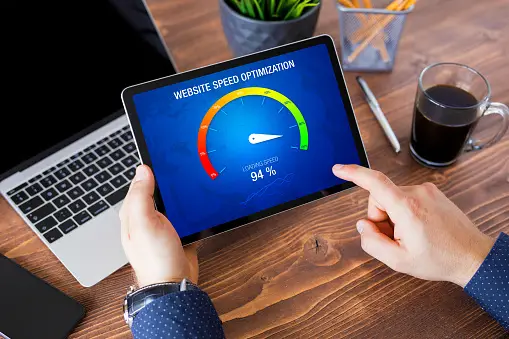
Have you ever visited a website that seems to be taking a nap before displaying anything? Not fun, is it? Faster page speed is equivalent to putting out the red carpet for your guests. It’s all about ensuring their happiness, engagement, and satisfaction. Quick-loading pages ensure that consumers get what they want quickly, making their time on your site easy.
Consider your website as among the candidates in a popularity contest, with Google as the judge. Google enjoys speed! Faster-loading websites receive a boost in search ranks. If you want your website to rank at #1 place in search results, speed is your secret weapon. It’s like impressing Google with your site’s running ability!
Consider this scenario: a visitor lands on your page, then boom! It seems to load up magically. That quick gratification is invaluable. Improved website speed is more than just stunning visitors; it is also a conversion master. Faster pages typically result in higher conversion rates, converting curious clicks into delighted consumers. It’s like ensuring that your website is a smooth operator in the online dating game of conversions.

Measuring page speed is similar to having a speedometer for your website’s performance. Here are the methods for doing it.
So meet Google PageSpeed Insights, your website’s personal coach! It’s like having a friendly expert examine your website. This program dives deep, examines every nook and corner, and then generates a report with ideas on how to improve your speed game. It’s your website’s personal trainer, guiding it to become the internet equivalent of Usain Bolt!
GTmetrix now serves as your website’s performance advisor. It not only examines your site’s performance but also provides a road map for improvement. It’s simple to use, so even if you’re not a tech whiz, you’ll understand the insights. Assume GTmetrix to be a wise coach who guides your website to its utmost potential. With actionable findings, you’ll have a strategy for your website’s speed success!
Think of Pingdom as your website’s friendly speedometer. It has an extremely user-friendly UI; no technical difficulties here! Pingdom tests the speed and performance of your website and presents the results in an understandable format. It’s like having a friend in the passenger seat telling you how quickly and smoothly your website is moving. Pingdom is your go-to companion for speed testing with no trouble!

Here are few important statistics that you can’t miss on –
Studies show that a one-second delay in page load time can result in a 7% reduction in conversions. Users are more likely to convert when they experience faster loading times.
Research indicates that 40% of users abandon a website that takes more than three seconds to load. Swift loading contributes to retaining users and reducing bounce rates.
Google considers page speed as a ranking factor. Websites with faster loading times tend to rank higher in search results, emphasizing the importance of speed in SEO strategies.
With over 50% of global web traffic originating from mobile devices, optimizing for fast load times is crucial for catering to the growing mobile user base.
Faster page speed contributes to improved user satisfaction and engagement. Users appreciate a smooth and quick browsing experience, leading to positive perceptions of the website.

Want your website to load as quickly as a lightning bolt on the internet? Get ready for some simple tactics that will significantly improve the speed of your website!
Use modern picture compression techniques to reduce file sizes while maintaining quality. This assures faster loading times, which improves the user experience and overall website performance.
Incorporate lazy loading tactics to delay the loading of non-essential items until they are about to become clear. This strategy conserves bandwidth and speeds up the first presentation of crucial content.
Conduct a thorough analysis of your website’s codebase to find areas for minification and cleanup. Reducing extraneous characters and whitespaces in CSS, JavaScript, and HTML files results in a cleaner code structure, which improves loading times.
Implement effective caching technologies, including server-side and client-side caching strategies. This improves content delivery by caching frequently visited material, which reduces server load and speeds up subsequent user requests.
Improve your website’s server designs by considering performance-oriented enhancements. Assess server response times, use content delivery networks (CDNs) for global distribution, and invest in dependable hosting solutions to provide the groundwork for fast content delivery.
Streamline the delivery of CSS and JavaScript files by optimizing their organization and minimizing render-blocking resources. This ensures a faster rendering process, contributing to an overall speedier user experience.
It acknowledges its pivotal role in initial page rendering. Implement techniques that prioritize loading crucial content visible to users without delay, striking a balance for a seamless and expedited user experience.
This site is protected by reCAPTCHA and the Google Privacy Policy and Terms of Service apply.